Homer's poems as a historical source. Antique civilization. H. 1
The anger irrepressible of his many calamities Aheyanam did:
Thousands of souls he destroyed the mighty and glorious heroes,
In gloomy Hades sending them! And the body is left nearby
Birds and dogs! Such was the will of the immortal Zeus.
From the very day the discord turned into cruel enmity
Between Atrid king and war hero Achilles.
(Homer. Iliad. Song One. Ulcer, anger. Translation by A. Salnikov)
Not so long ago, not one, but several visitors to the VO website at once expressed themselves in the sense that Japanese culture is, of course, good, but they are confused in names that are difficult to pronounce and too exotic. In response to the offer to write what they wanted, they received answers that something desirable from the Greco-Roman stories and ancient civilization, and the era of its decline. But how to write about the sunset, without describing its flowering? Not turning to its historiography? No, for example, I can not. Therefore, let us do this, we will prepare a cycle of materials on the culture of ancient Greece and Rome, well, and at the beginning of this topic we are just asking for a story about such important historical sources as Homer's poems Iliad and Odyssey.
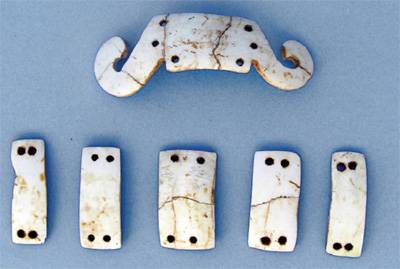
Details of the helmet from the tusks of the boar, described in the Iliad and relating to the XIV century. BC. from Aigios Vasillios, near the village of Hirokambi in Laconia.
Well, let us begin by emphasizing once again that a person does not know anything about the world around him beyond what his eyes see and hear his ears. That is, roughly speaking, there was neither Ancient Greece, nor Rome, by the way, there are none today either - I wasn’t there. There was no RI, VOSR and BOB - who participated in your and my peers? True, veterans of the Great Patriotic War are still alive, and they can tell us about how it was by word of mouth. Yes ... But that is all! Therefore, we must constantly remember that everything, absolutely everything that we know, we know thanks to the written sources of information - handwritten and printed, well, and now also the LCD screen of a computer monitor connected to the Internet system. Books, newspapers, magazines containing subjective, so to speak “journalistic information” - these are the sources of our information in the first place. At the same time, it is important to emphasize that you again receive subjective information, such as, “but I see this.” This information is supplied to the society by reporters. But there are also journalists who write “as I understand it,” but if he understands at least something, you need to find out. And this is not easy to do. Do you know any languages? So you have to believe a word with what seems to be to know them. But ... should and knows - things are different. And there is - “was and was not”, “saw - did not see”, “understood - did not understand”, and also ... “I write to order” and see what “must be seen”. Therefore, it is very difficult to obtain real information about some events, especially long-standing ones.
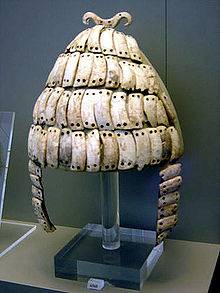
“Kabany Helmet” from the tomb No.515 in Mycenae. (National Archaeological Museum in Athens)
However, it helps us in studying them that the written sources that we have at our disposal are also superimposed on the historical artifacts that have come down to us. In the same poem of Homer, the Iliad, the heroes fight with copper-pointed spears, that is, spears with tips of copper. And archaeologists find such! So - this is not fiction. In the poem, the Achaeans - warriors who came to fight in the fortress-based Troy, are described, for example, as “beautifully scrawny”, that is, shod in beautiful leggings and ... archaeologists actually find beautiful “orthopedic” copper leggings, made just by foot. So it was like that!
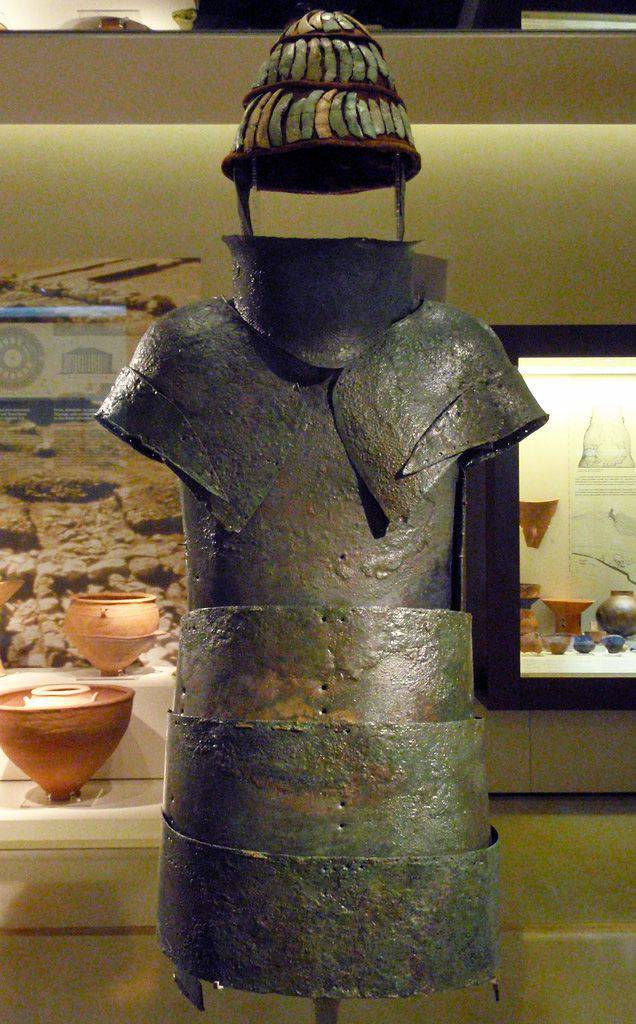
But the full Achaean armor and helmet (ok.1400, BC). (Nafplion Museum). To run in such armor here would be obviously difficult, but to fight from the chariot is just right.
So the availability of writing is a great achievement of culture. And we are very lucky that the Greeks already had it, that they recorded the creation of Homer, thanks to which we quite well imagine the history and culture of this ancient country and the first, in fact, European civilization.
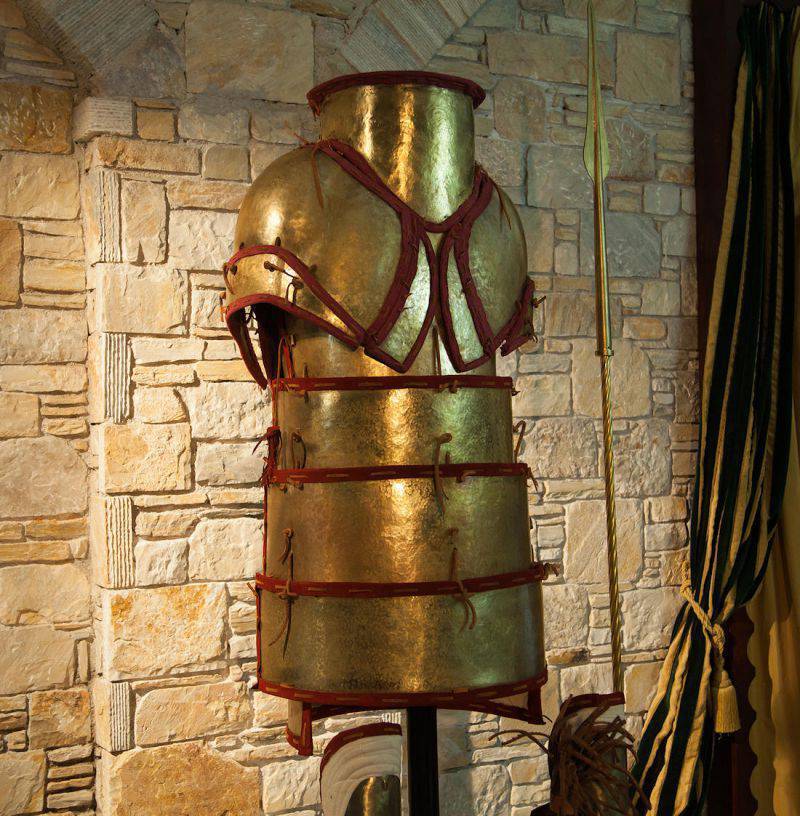
And remarkable in their quality of their modern reconstruction.
Well, now you can talk about the poem Iliad itself and how it is wonderful. And, besides its artistic merit, it is remarkable primarily because, like the poem Eugene Onegin, rightly considered an encyclopedia of Russian life of the early 19th century, it is an encyclopedia of the ancient society that existed during the bronze age of the XII century. BC er True, Homer himself is about 400 years away from the events he describes. The term is considerable, but life then flowed slowly, there were few changes in it. Therefore, although the debate about how truthfully Homer portrayed the Mycenaean era, living in completely different times, can be considered proven that they are close to reality. For example, in the list of ships given in the poem, there is clear evidence that the Iliad describes the era of the Iron Age, in which Homer was already living, and that which existed in Greece before the invasion of Dorian tribes.
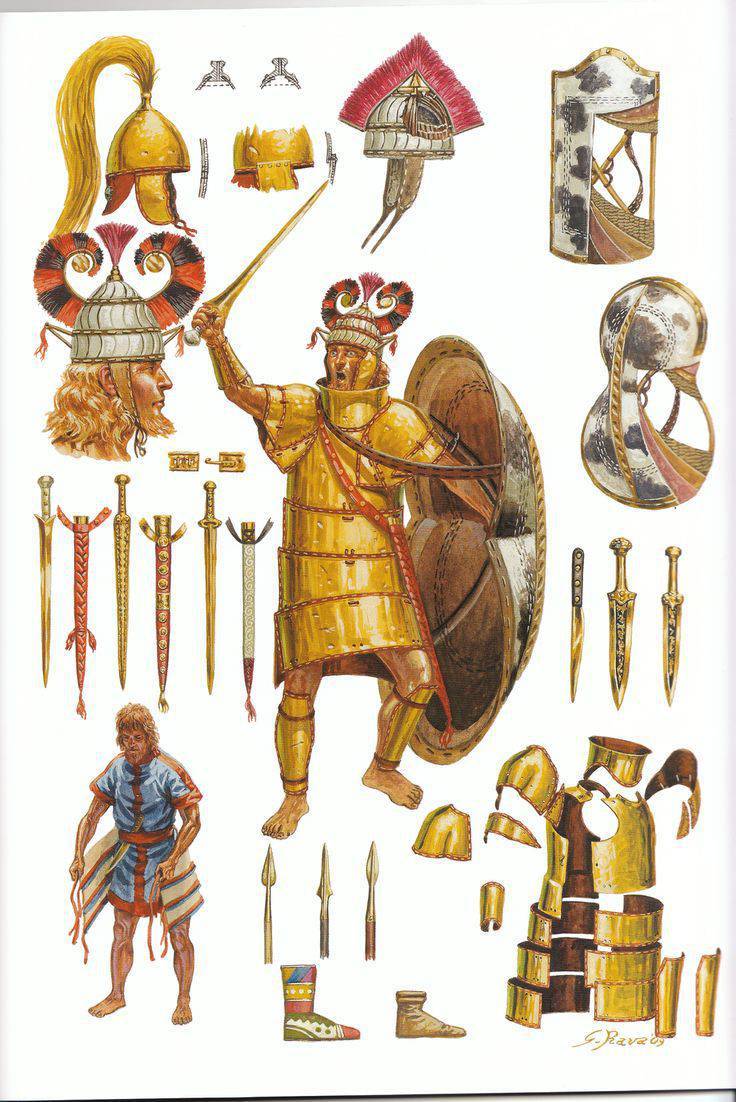
Mycenaean warriors of the XII century. BC er c. Artist J. Rava
As for the name "Iliad", it literally means "Trojan Poem", since Troy also had a second name - "Ilion", and it is used quite often in the poem. For a long time, historians and writers argued about whether this poem describes events that took place in reality, or whether the Trojan War is just a literary, though ingeniously conceived fiction. However, the excavations of Heinrich Schliemann in Troy, showed that the culture, which is almost completely consistent with the description in the Iliad and referred to the end of the II millennium BC. er., was really there.
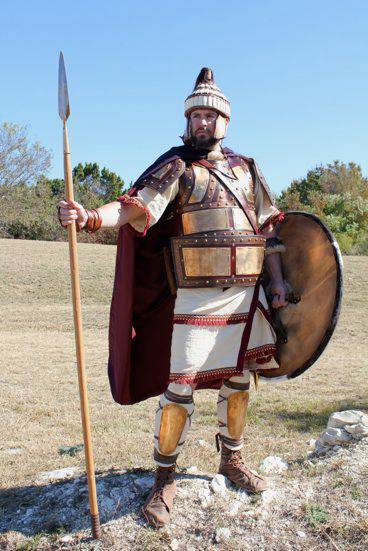
"Odysseus". The reconstruction of the armor was made by American specialist Matt Potras.
Confirm the existence of a powerful Achaean power in the XIII century BC. er and recently deciphered Hittite texts, and they even contain a number of names known before only from this Greek poem.
The point, however, is only limited to Homer's poems. There is a whole cycle of legends about the Trojan War, the so-called “Trojan cycle” or “Epic cycle”. Something has come down to us in separate fragments, such as, for example, “Kipriy”, something only in the synopsis and retellings of later authors. But Homer's "Iliad" and "Odyssey" are valuable primarily because they have survived to our time almost completely and without foreign inserts.
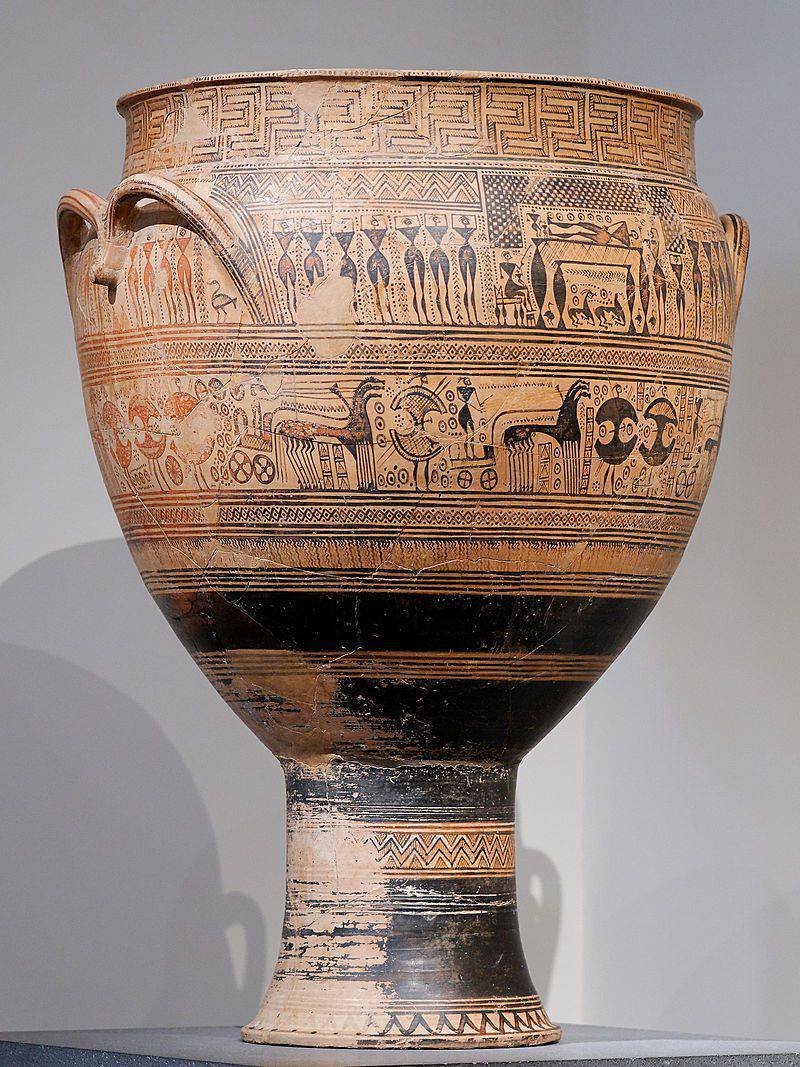
Dipilon crater, around 750 - 735 BC. It is believed that Homer lived around this time. (Metropolitan Museum, New York)
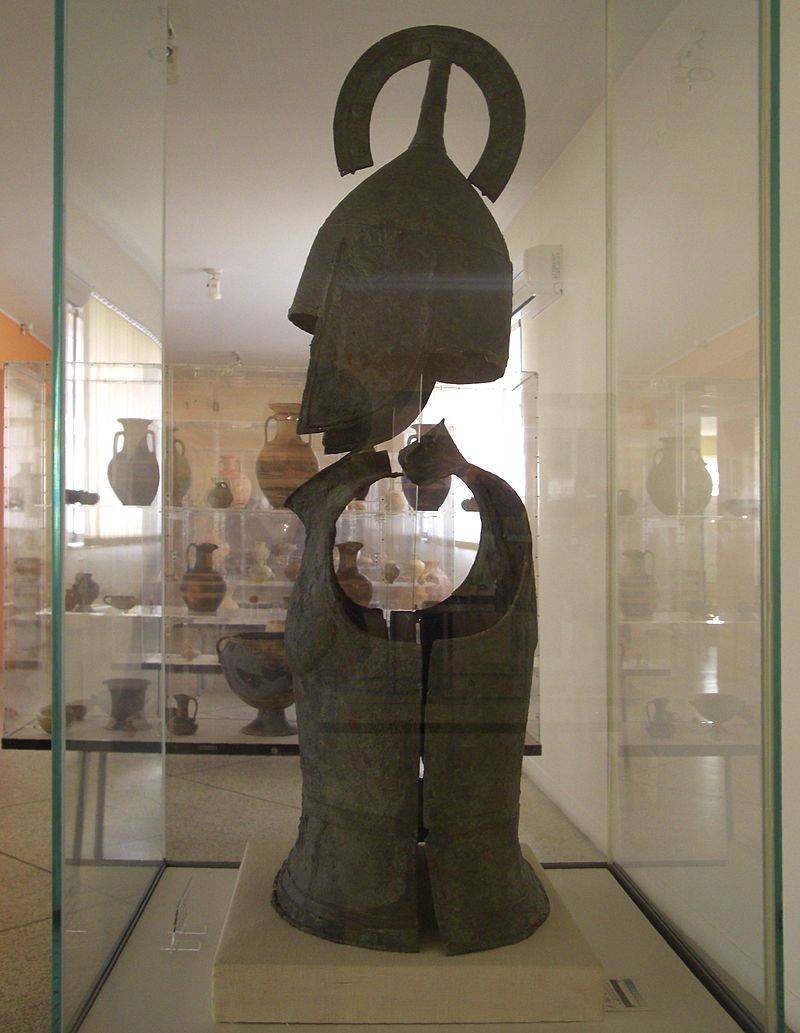
Helmet and armor of this time. (Archaeological Museum in Argos)
Today it is considered that the Iliad appeared in the 9th — 8th centuries. BC er in the Greek Ionian cities located in Asia Minor, and it was written on the basis of the legends of the Cretan-Mycenaean era that had survived to that time. It contains about 15 700 poems (that is, written in hexameters) and is divided into 24 songs. The action of the poem is rather short-term. However, it contains a lot of exceptionally vivid images and descriptions that allow at least a little to imagine life and - most importantly, the spirit of that era distant from our “today”.
It is hardly worth describing the vicissitudes of the events that led to the righteous anger of Achilles, Peleev’s son and the interference of the Olympic gods in earthly affairs. It is important that in the second song of the Iliad, Homer describes the forces of the opposing sides and reports that, under the leadership of Agamemnon, 1186 ships arrived under the walls of Troy, while the Achaean army itself includes more than 130 thousand soldiers. Is this figure real? Most likely no. But it is important to note that the troops to help Agamemnon were sent from different regions of Hellas.
Helmets (Archaeological Museum in Olympia)
Together with the Trojans under the leadership of the helm-helper Hector, the Dardans (led by Aeneas), as well as Carians, Lycians, meons, Misa, Paflagonians (under the command of Pilemen), Pelasgians, Thracians and Phrygians, fight against the Greek Achaeans.
Here, for example, is the description given in the Iliad of how the legendary Achilles is fitted out for a duel with Hector:
First of all, he put on fast legs
Marvelous by sight, he closed them with a silver buckle, he tightly;
After that, he put on a most powerful armor on a powerful chest;
He threw his sword on his shoulder with a silver-armed hilt,
With a copper blade; and the shield finally took a huge and strong.
The light from the shield far, as from a month at night, has spread.
As if in the sea, night-time sailors shine in the darkness,
The light from the fire that burns far on a rocky peak,
In the house is desolate, and against their will and the waves and the storm
Away from your loved ones carry far on boiling ponto, -
So the shield of Achilles beamed, lush, wondrous to the eyes, over the air
He cast light everywhere. After the helmet took Pelid a multifocal,
Cleverly put on - shone horse-faced and strong star
Above his head, and above him a golden swaying mane,
What is so skillfully Hephaestus strengthened along the ridge, thick.
(Homer. Iliad. Canto of the nineteenth. Renunciation of anger. Translation by A. Salnikov)
Any literary source can be used as an object of historical knowledge with great care, and the Iliad is not an exception. What are, for example, the messages of “a samovidts, who saw the regiment of God on the air,” the vision of Boris and Gleb, who helped Russian soldiers beat the “vile” and similar statements about the miraculous that were included in the domestic historical and literary foundation. And we see the same thing in Homer: his gods behave quite like humans, only still ... much worse! Socrates paid attention to this, asserting that the Greek gods are collections of vices from which no citizen can take an example. But we, in this case, are not at all interested in “divine morality”. We are interested in “helmet-flashing helmets,” a description of the shield of Achilles ”(even forged by Hephaestus, but containing in its description a lot of interesting details about the life of that time), copper armor, broken swords (broken by hitting the helmet!). The heroes of the poem do not disdain to fight stones, that's how, when they lose their brass weapons. And their combat construction is ... phalanx, which is typical for the era of Homer. But the frescoes tell us that in the Crete-Mycenaean era the phalanx was, otherwise why would the soldiers depicted on the Cretan frescoes have large rectangular shields and long spears. With such weapons alone fight quite uncomfortable.
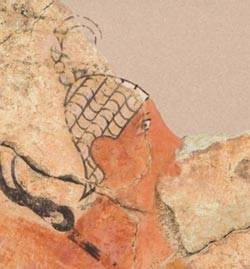
A mural depicting a warrior in a helmet from Pylos.
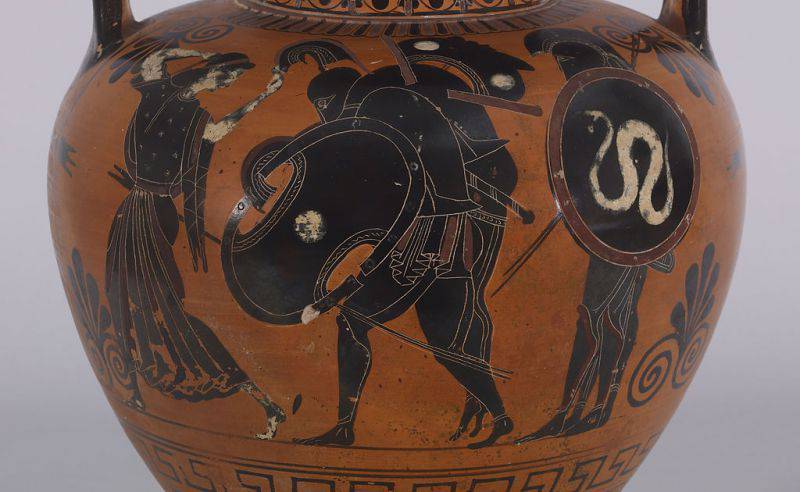
Artist Antimen: "Ajax takes away the body of the dead Achilles." Painting on a vase. We see a dipilonian shield, that is, a shield with lateral grooves, which once again indicates that they were common in the era of Homer. (Walters Art Museum)
So a grain by text of the Iliad gives us the opportunity, if not to imagine the appearance of the soldiers, participants of the Trojan War, for example, it is unclear from the text how Menelaus and Achilles’s helmets were arranged, then in any case have their text description (without special details), and then ... further expect confirmation from archaeologists, who with their finds fill these gaps in the descriptions.
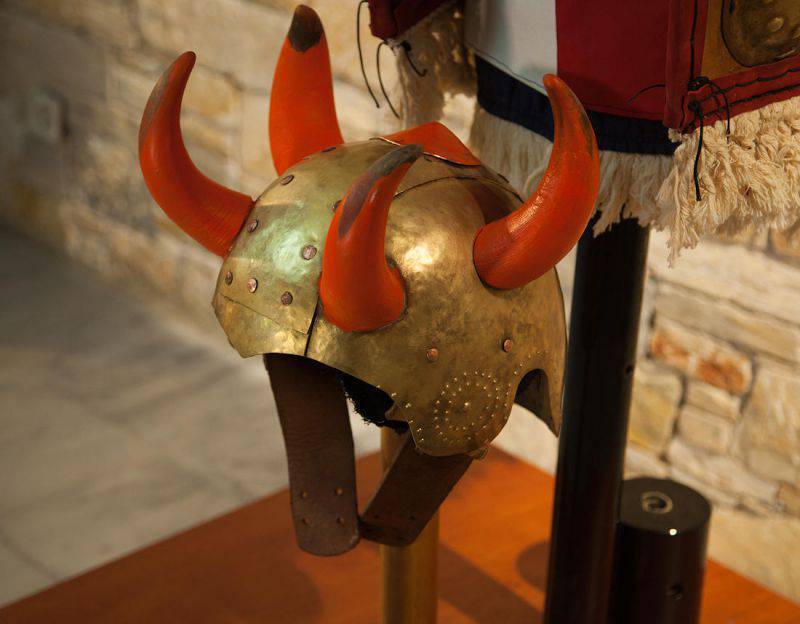
The Helmet of Menelaus, in the form in which Katsikis Dimitrios of the Greek Association of Historians Korivantes reconstructed it, consists of three bronze plates connected by rivets. Four horns - made of painted wood. They give it a characteristic frightening look, but like the “horns” on knight’s helmets in the Middle Ages, they most likely were fixed insecurely.
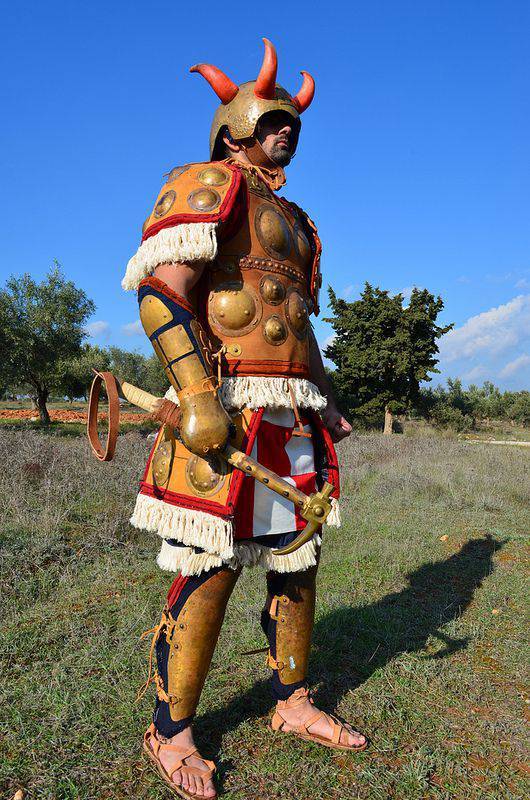
But they represent Menelaus himself ...
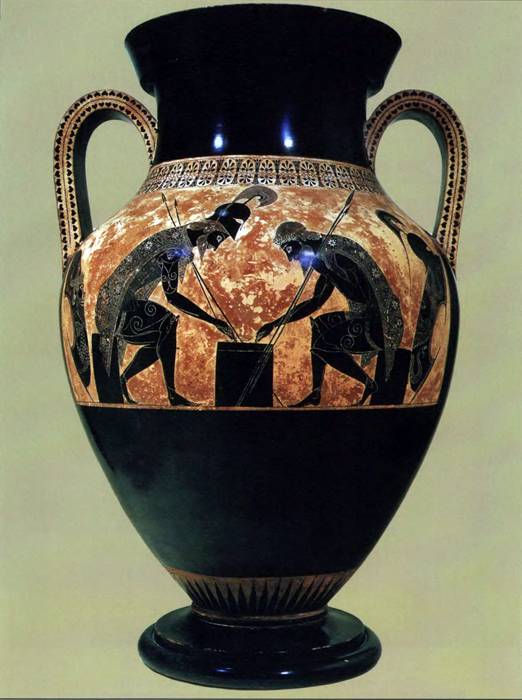
However, we are accustomed to see the heroes of the Trojan War, all the same as they were portrayed later. So, for example, how it was done, the Greek potter and painter Exeky, who worked in the style of black-figure ceramics, and depicted Achilles and Ajax playing dice. This episode in the Iliad is not. But why should they not play at their leisure? That is, Exeky just made this story up for his mural. And again ... why don't he come up with it? By the way, dressed in armor Achilles and Ajax playing dice with excitement, what happens to people accustomed to war.
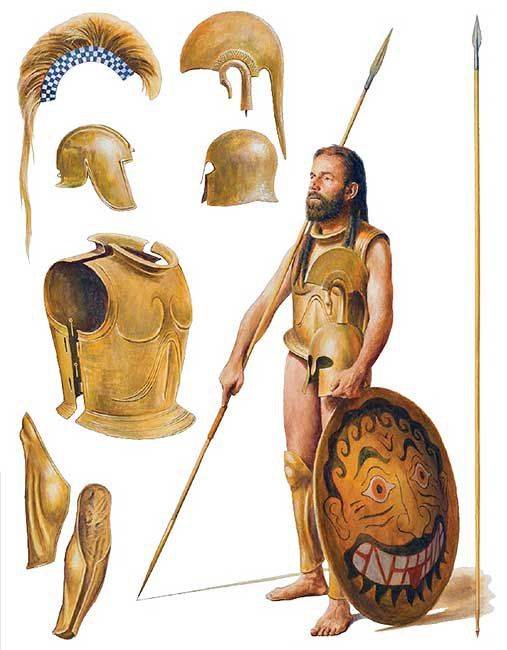
Since the history of classical Greece is closer to us and we have a lot of images of its soldiers on the same black-figure and red-figure vessels, we and the soldiers of the Trojan War are most often represented like this. In the figure, the Spartan warrior 546 BC. er (Artist Steve Noon)
In the Iliad, the cunning Odyssey, the favorite of the goddess Athena, wears a helmet made from wild boar tusks, moreover, he describes in great detail by Homer
The helmet was of leather; inside he was woven with straps and tied
Hard; like a protection on the outside around him
White boar's fangs, like dragon's teeth, glittered
In the slender, beautiful ranks; and the helmet was hit by a thick cloth.
This ancient helmet had long taken Eleon Autolycus from the walls ...
(Homer. Iliad. Song of the Tenth. Dolonia. Translation by A. Salnikov)
One could wonder for as long as I wanted how and why such helmets were made from boar tusks. Indeed, the location of the Greeks was already metal. And it’s not for nothing that the Hector Trojan in the poem is constantly called “helmet-mite”. However, when the remains of such helmets were found by archaeologists, their description given in the poem was fully confirmed.
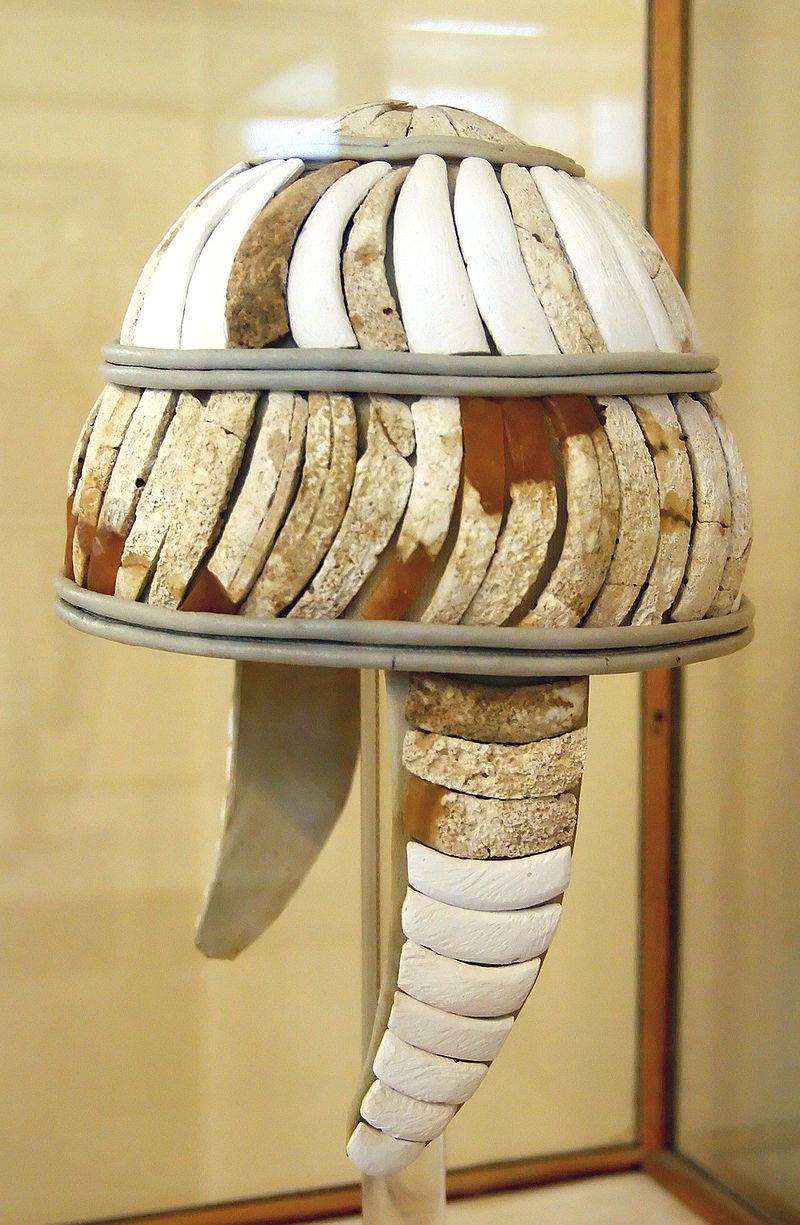
Helmet of boar tusks. (Archaeological Museum of Athens)
Interestingly, the oldest manuscript containing the full text of the Iliad is the illuminated manuscript of the end of the 5th - the beginning of the 6th century from Byzantium, which is called the "Ambrosian Iliad" after the library in which it is located. But the oldest manuscript containing the full text of the Iliad is Venetus A from the library of St. Mark, written in the 10th century. Well, the very first print edition of the Iliad appeared in Florence in 1488.
Achilles's Triumph over Hector. Fresco in the Achillion palace on the island of Kerkyra in Greece. (1890)
Many authors, beginning with Lomonosov, tried to translate the Iliad and the Odyssey into Russian. "Iliad" translated N.I. Gnedich (1829) is still considered the best example of such a translation and accurately conveys the feeling of the original in terms of the strength and vivid imagery of the language, although it is replete with archaisms, which are no longer characteristic of modern speech. Today there are four translators (and translations) of the Iliad: Gnedich Nikolay Ivanovich - translation of 1829; Minsky Nikolay Maksimovich - translation of 1896; Veresaev Vincent Vikentievich - translation of 1949 of the city: Salnikov Alexander Arkadyevich - translation of 2011, and, accordingly, four translators (and translation) of the Odyssey: Zhukovsky Vasily Andreyevich - translation of 1849; Veresaev Vikenty V. Vikentyevich - translation 1945 g .; Shuisky Pavel Alexandrovich - translation of 1848; Alexander Arkadyevich Salnikov - translation of 2015. According to many readers, the translations of the Iliad and Odyssey by A. Salnikov have already been noted as the best and most convenient for modern reading.
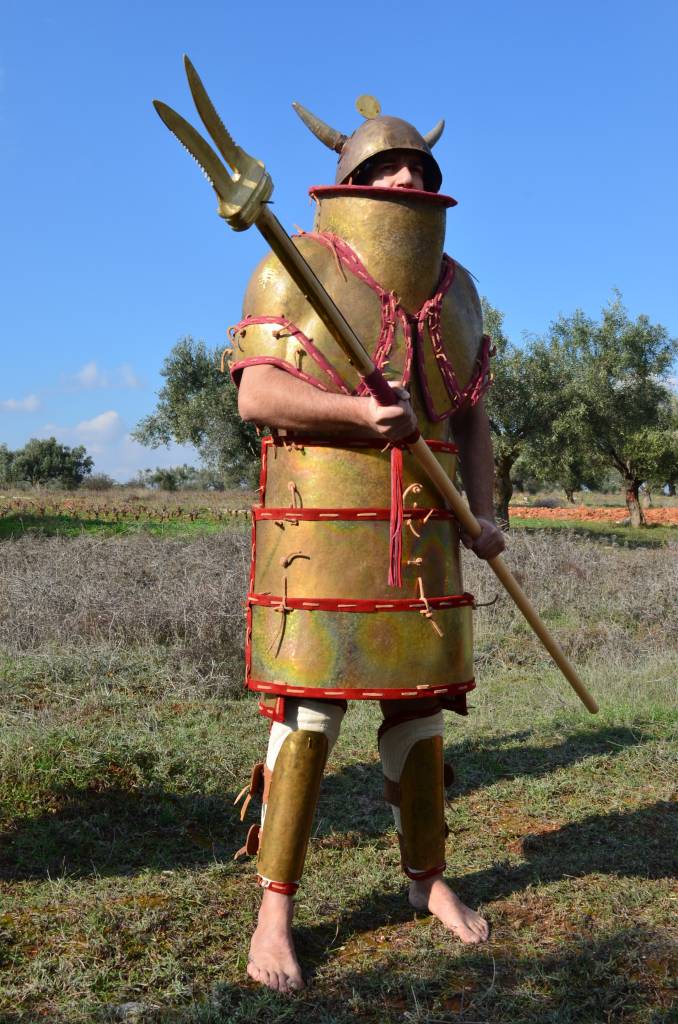
Reconstruction of the Dendra armor, so to speak, in action. Association of Historical Studies KORYVANTES. Photo by Andreas Smaragdis.
The author is grateful to Katsikis Dimitrios (http://www.hellenicarmors.gr), as well as to the Greek association Korivantes (koryvantes.org) and personally to Matt Potras for providing photos of his renovations and information.
To be continued ...
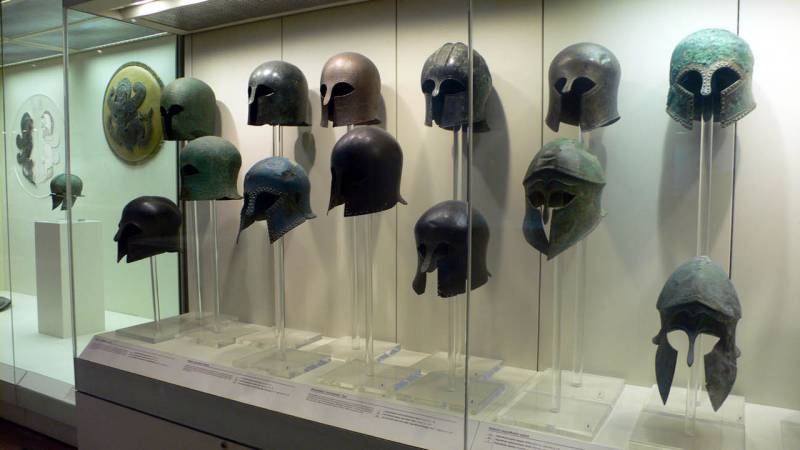
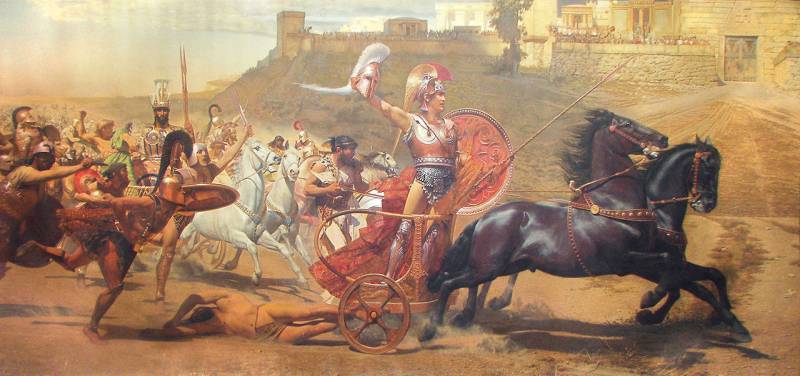
Information